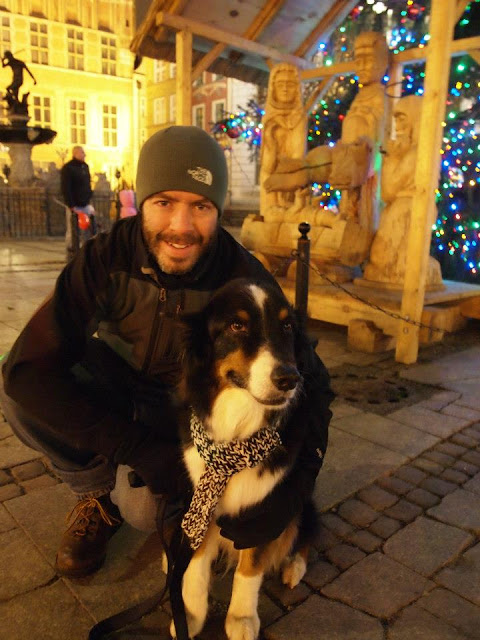December 15, 2012
I've never lived anywhere where it really seemed like Christmas. Sure, the festivities surrounding the holidays always seemed genuine, but, for some reason 60 degree F* days preceeding Christmas in South Carolina, Virginia, Georgia and Mississippi wasn't "quite right." It often wasn't cold, and there definitely was no snow.
(*Fahrenheit was from Gdańsk, which is another reason I refuse to use Celsius.)
Gdańsk, however, is now full of Christmas charm. The old buildings all have a dusting of snow on their roofs, and the Christmas market is in full swing by the Golden Gate. The site of the Christmas market is also the old site of the coal market long ago. I wonder if that's where Santa used to get those pesky coal nuggets to put in the shoes (not stockings-that's a German/Scandinavian tradition) of "niegrzeczny" (naughty/not polite) children.
The Saint Nicholas tradition in Poland includes setting your shoes by the door on the night of St. Nicholas Day, and he leaves presents in your shoes.
The Christmas season starts in Poland on St. Nicholas Day (December 6). I really did not realize that St. Nicholas had his own Special Day, well, probably because I'm Protestant and the whole Saint thing isn't our bag, baby. I'm learning a lot about Catholicism in Poland, as they celebrate many Catholic/Christian holidays much differently than even American Catholics, or so I am told.
Reindeer munching away, little girl telling Santa what she wants for Christmas
I didn't realize that Santa is Finnish. Makes sense.
Saint Nick's Post Office
Christmas Market decorations
Christmas Market or Jarmark
'Sup
Santa, et al by the Golden Gate (the main old medieval gate to the city)
In the building behind the Christmas market was the indoor part of the market.
It included an art exhibit from the Academy of Fine Arts (located next door)
The exhibit: Cool Christmas Trees
The one above was made from paper cups, and the one behind it was made from a wedding dress
Funky scrap metal tree
I call this one, Yard Sale Tree
Fishing Net and Light Tree
My favorite.
Tiny styrofoam cubes suspended on fishing line, very whimsical.
The Words-That-Make-Christmas Tree
Dom = Home, Ryba = Fish, Pierogi = comes from the Polish word for "festival", Zakupy = Shopping, Rodzina = Family
Lots of mistletoe for sale on the street outside the Halla Targowa. Ooo yay my egg lady is there!
You know those Shepherds that visited Baby Jesus had a Shepherd Dog with them :)
Merry Christmas!
So sweet. We miss him so much. I'm glad that we got to take him down for these photos.
Neptune
Doug snapped this picture this morning of a seagull walking on the river. The ice was thin enough that the river still looked like fluid water, but thick enough for the birds to walk on. Wicked.
In the last 3 hours, it has been snowing and the ice is now covered in a layer of white fluffy stuff.
Wesołych Świąt!
Merry Christmas!
.JPG)
.JPG)
.JPG)
.JPG)
.JPG)
.JPG)
.JPG)
.JPG)
.JPG)
.JPG)
.JPG)
.JPG)
.JPG)
.JPG)




.JPG)
























































